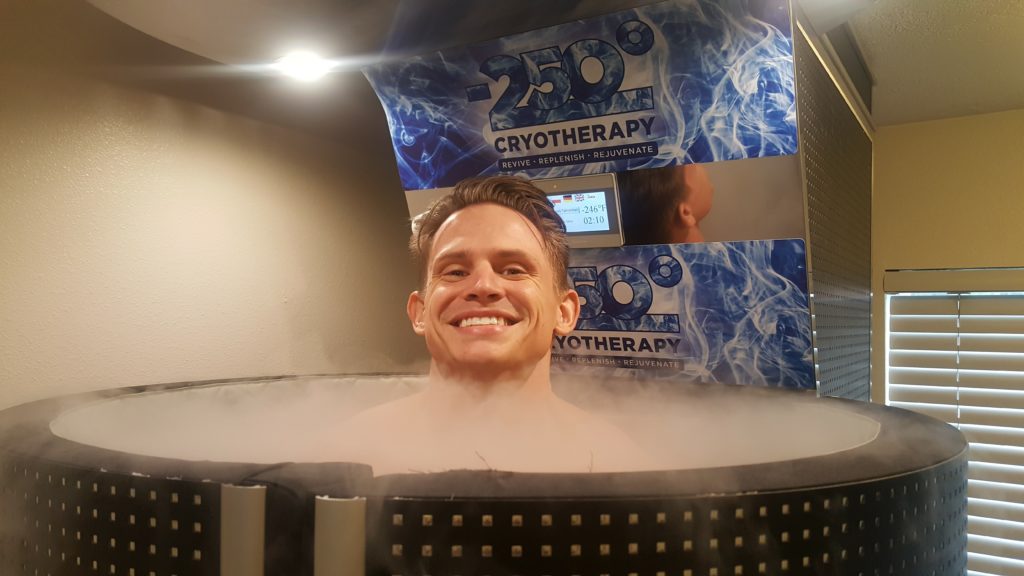
Whole body cryotherapy has recently become a trend among celebrities and athletes. Its promised benefits can be compelling, but medical professionals are questioning the practice.
Whole body cryotherapy, also known as cool therapy, is a treatment that exposes an individual’s whole body to temperatures that dip below negative 200 degrees Fahrenheit for two to four minutes.
According to a study by Cochrane, this type of therapy is mostly used to prevent muscular pain, tenderness and stiffness after working out. Previously, this type of therapy was used to freeze off warts and other types of skin lesions.
Cryotherapy has recently moved into spa and gym facilities, touting benefits like weight loss, younger-looking skin and increased energy. However, the FDA says it does not regulate whole body cryotherapy.
Brock Roberts is the owner and operator of Minus 250 Degrees Cryotherapy in Orem. Roberts said his regular customers are athletes and people with injuries who can’t find relief using other forms of therapy.

Roberts said cryotherapy at his facility utilizes liquid nitrogen that is transferred into a vapor that fills a chamber and causes the temperature to fall to minus 250 degrees Fahrenheit. He said it does not cause the tissue to become that cold, only the area around it.
“So what that does to the body is it causes the body to go into fight-or-flight mode, where vascular constriction takes place because of a neurological response,” Roberts said.
After the body goes into fight-or-flight mode, Roberts said blood flow decreases from the extremities and collects the blood from the vital organs in an effort to keep the body alive. He said this tricks the body, and when the body warms back up and the blood flow returns, the blood has increased oxygen levels.
Annie Nguyen heard about cryotherapy from her friend who shared his experience at US Cryotherapy in Salt Lake City, and Nguyen said it intrigued her.
Two days before Nguyen participated in a Spartan race she said she had not trained adequately for, she decided she would give cryotherapy a try.
“I was extremely nervous,” Nguyen said. “I was about to go stand inside a giant freezer and willingly freeze myself.”
Nguyen said the person assisting her suggested she not go in as long because it was her first time.
“I got into my swimsuit, and he gave me mittens, a little mask to cover my mouth and nose, earmuffs and slippers,” Nguyen said. “After my minute was up, he had me walk on a treadmill for 15 minutes to warm my body back up. My skin felt amazing. That was probably the only benefit that I noticed instantly.”
Nguyen said she was surprised after her race ended that she was not as sore as she expected. She said she still is not sure if she attributes that to cryotherapy or not.
Orem family practitioner Nickolas Harker has experience practicing cryotherapy but only on a smaller scale, never the whole body.
Harker said he has used local cryotherapy for removing warts and other minor skin lesions in his medical practice. He said this type of cryotherapy is safe as long as the skin is not exposed too long, as increased exposure can damage the tissue.
“Whole body cryotherapy doesn’t seem like a good idea as of yet,” Harker said. “It is so cool and trendy but it tends to shift to the spa environment, which we have seen with things like Botox parties and such in order to make lots of money.”
Harker also emphasized that the FDA has not approved or regulated this type of therapy for its use on the entire body.
“Unfortunately, clever marketing can make anything that is not known to be safe seem safe, and people buy it. But we really don’t know a lot about whole body cryotherapy, according to the FDA,” Harker said.
Harker added he would not recommend whole body cryotherapy to anyone at this point.
“Does that mean there aren’t benefits and that it is not safe? Not necessarily, but it should be adequately researched and tested before the world goes hog-wild for it,” Harker said.




